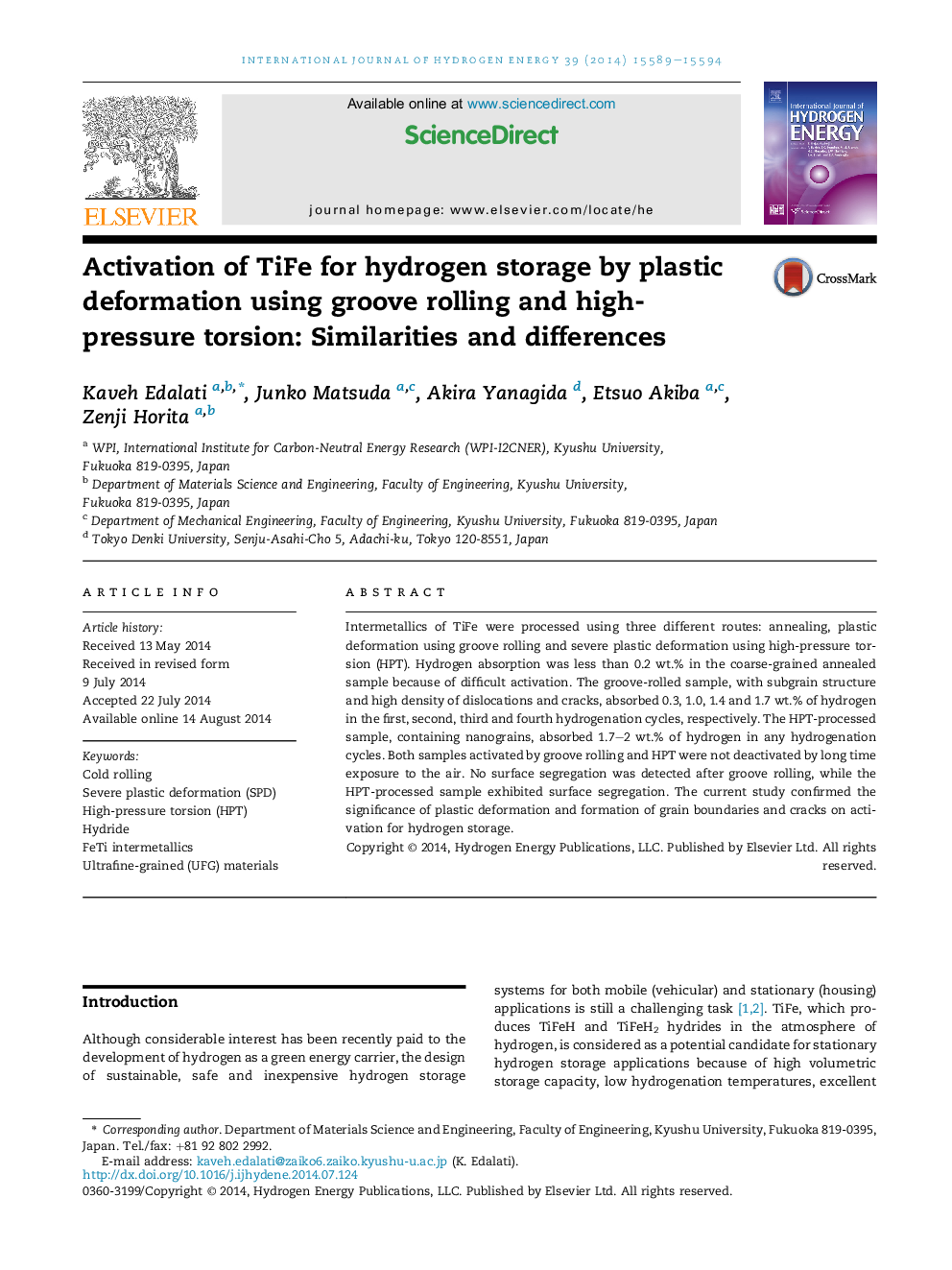| Article ID | Journal | Published Year | Pages | File Type |
|---|---|---|---|---|
| 1272396 | International Journal of Hydrogen Energy | 2014 | 6 Pages |
•TiFe was plastically deformed by groove rolling and high-pressure torsion (HPT).•Subgrains and nanograins were formed after rolling and HPT, respectively.•Both rolled and HPT-processed TiFe absorbed hydrogen without activation process.•Activation by HPT was faster than activation by rolling due to larger imposed strain and higher fraction of grain boundaries.
Intermetallics of TiFe were processed using three different routes: annealing, plastic deformation using groove rolling and severe plastic deformation using high-pressure torsion (HPT). Hydrogen absorption was less than 0.2 wt.% in the coarse-grained annealed sample because of difficult activation. The groove-rolled sample, with subgrain structure and high density of dislocations and cracks, absorbed 0.3, 1.0, 1.4 and 1.7 wt.% of hydrogen in the first, second, third and fourth hydrogenation cycles, respectively. The HPT-processed sample, containing nanograins, absorbed 1.7–2 wt.% of hydrogen in any hydrogenation cycles. Both samples activated by groove rolling and HPT were not deactivated by long time exposure to the air. No surface segregation was detected after groove rolling, while the HPT-processed sample exhibited surface segregation. The current study confirmed the significance of plastic deformation and formation of grain boundaries and cracks on activation for hydrogen storage.
